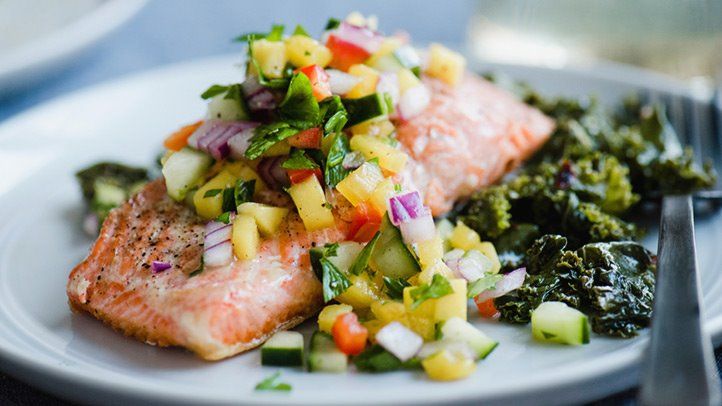Understanding the Autoimmune Protocol Diet
The autoimmune protocol (AIP) diet has become an increasingly popular approach for managing autoimmune conditions. It is an elimination diet that removes foods thought to commonly trigger inflammation and autoimmune reactions. The goal of the AIP diet is to give the body a break from problematic foods so that the immune system can calm down and heal.
What Is the AIP Diet?
The AIP diet aims to eliminate or reduce exposure to foods that tend to be pro-inflammatory and gut irritating. These foods include grains, legumes, dairy, eggs, nuts, seeds, nightshades, processed foods, oils, alcohol, and food additives. By removing these trigger foods, many people experience significant reductions in inflammation, autoimmune symptoms, and gut issues.
After a period of elimination, typically 30 days at minimum, some of the restricted foods can be carefully reintroduced one at a time to test for personal reactions. This helps determine your own set of trigger foods so you know what to continue avoiding long term.
Common Foods Allowed and Eliminated on AIP
Here is an overview of the main categories of foods to enjoy or avoid on the standard autoimmune protocol diet:
Foods Eliminated
- Grains like wheat, barley, rye, oats, rice, corn, etc.
- Legumes like beans, lentils, peas, peanuts, soy
- Dairy products
- Eggs
- Seeds like sunflower, pumpkin, sesame
- Nuts like cashews, almonds, pistachios
- Nightshades including tomatoes, potatoes, eggplant, peppers, etc.
- Certain oils like canola, vegetable, sunflower, safflower
- Refined sugars
- Processed foods with additives
- Alcohol
- NSAIDs like ibuprofen
Foods Allowed
- Non-nightshade fruits and vegetables
- Clean meat, poultry, fish
- Natural fats like olive oil, avocado oil
- Herbs, spices, teas
- Fermented foods like sauerkraut, kimchi
- Bone broth
- Coconut products
How an AIP Diet App Can Help
Following such an extensive elimination diet plan can feel overwhelming at first. An AIP diet app can provide helpful support in several key ways:
- Meal planning: An app can provide AIP compliant recipes, build shopping lists, and take the guesswork out of menu planning.
- Information: It can be a reference guide for allowed and avoided foods with filters to check ingredients.
- Community: Connect with others also following the protocol for tips and encouragement.
- Accountability: Track symptoms and reactions to identify personal triggers.
- Reintroductions: Log food reintros along with physical reactions in one centralized place.
Having all your AIP tools in one easy-to-use app can help get started, save time, identify problem foods, and stick with the protocol for better health results.
Typical Results and Benefits of AIP
Many people choose the autoimmune protocol when other diets and
FAQs
What are the main foods to avoid on the AIP diet?
The main foods eliminated on the standard AIP diet include grains, legumes, dairy, eggs, nuts, seeds, nightshades, processed foods with additives, certain vegetable oils, alcohol, and NSAIDs.
Is the AIP diet safe long-term?
Some critics argue the AIP diet may be too restrictive for long-term use and could risk potential nutritional deficiencies. Working with a healthcare professional can help monitor your status. Many also find they can add some foods back in after an elimination trial period.
How long should you try the AIP diet before seeing improvements?
It typically takes about 4 full weeks on the elimination phase before noticing substantial benefits. Symptoms tend to improve progressively the longer you remain compliant with removing trigger foods.
What conditions is the AIP diet used for primarily?
The AIP diet is often used to help manage autoimmune disorders like inflammatory bowel disease, Hashimoto's thyroiditis, psoriasis, multiple sclerosis, rheumatoid arthritis, and more. Skin conditions and mood disorders also sometimes improve.
Disclaimer: This article is for informational purposes only and does not constitute medical advice. Always consult with a healthcare professional before starting any new treatment regimen.
Related Coverage
Carrots fit into paleo and keto diets in moderation. Get their nutrition facts, benefits, and tips for eating carrots on paleo and keto....
The paleo diet eliminates added sugars, but small amounts of natural sweeteners like fruit, honey and maple syrup can be used in moderation. Get paleo substitutes for ice cream, chocolate and desserts....
Excessive sweating or hyperhidrosis in men causes embarrassing pit stains, sweaty hands, and skin irritation. Learn causes and treatment options like prescription antiperspirants, iontophoresis, Botox, and MiraDry....
Almond milk is controversial within the paleo community. While processed, small amounts of additive-free almond milk can fit into a paleo framework in moderation....
The paleo diet allows for sweet paleo candy when made with wholesome ingredients like fruit, dark chocolate, coconut, nuts and natural sweeteners....
Should you eat corn on the Paleo diet? This article looks at the debate around corn's status as a Paleo approved food, including reasons to avoid it or eat it in moderation....
Example 168 character meta description that provides a concise summary fitting length recommendations for search engines....
Tomatoes are paleo-friendly despite some confusion over their status. Learn why most paleo guides permit tomatoes, the benefits they offer, and tips for eating them....
Research shows taking a 30 mg saffron supplement daily provides extensive health perks from enhancing mood and cognition to easing anxiety and aiding skin health....
Get a comprehensive paleo diet cheat sheet including a food list, sample weekly meal plan, top recipe websites, and 5 highly rated paleo diet books for beginners....




